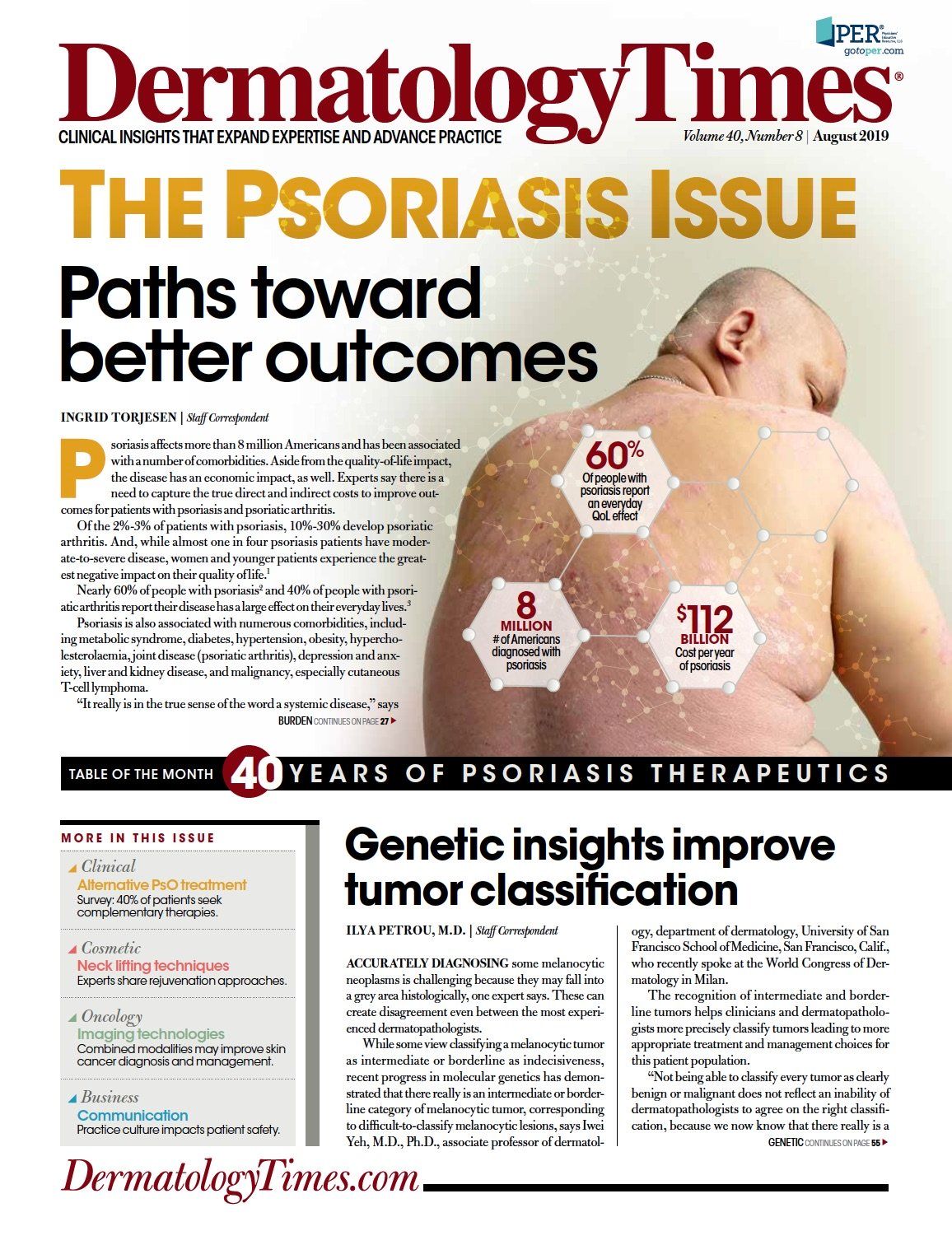- Case-Based Roundtable
- General Dermatology
- Eczema
- Chronic Hand Eczema
- Alopecia
- Aesthetics
- Vitiligo
- COVID-19
- Actinic Keratosis
- Precision Medicine and Biologics
- Rare Disease
- Wound Care
- Rosacea
- Psoriasis
- Psoriatic Arthritis
- Atopic Dermatitis
- Melasma
- NP and PA
- Skin Cancer
- Hidradenitis Suppurativa
- Drug Watch
- Pigmentary Disorders
- Acne
- Pediatric Dermatology
- Practice Management
- Prurigo Nodularis
- Buy-and-Bill
Publication
Article
Dermatology Times
Consider more than severity, spread in psoriasis
Author(s):
The evaluation of psoriasis requires more than simply checking the severity and spread of the disease, a new report suggests. Rather, physicians should try to distinguish between stable and active disease with an eye toward the wider body-wide effects of the latter form.
(nikkikii - stock.adobe.com)

The evaluation of psoriasis requires more than simply checking the severity and spread of the disease, a new report suggests. Rather, physicians should try to distinguish between stable and active disease with an eye toward the wider body-wide effects of the latter form.
"Stable plaque psoriasis of limited extent can be treated as a cutaneous disease, not impacting comorbidities, whereas more extensive active disease should be regarded as a systemic inflammatory disease, impacting internal diseases, including arthritis and metabolic syndrome," the authors write. The report was published March 28 in the Journal of the European Academy of Dermatology and Venereology.
The report authors, led by E. Christophers of the Department of Dermatology at SH University Clinics in Kiel, Germany, made several points about psoriasis:
- Severity of psoriasis and systemic disease – especially cardiovascular disease (CVD) – are linked. The authors write that "…in psoriasis and in RA [rheumatoid arthritis] chronic inflammation with extensive organ involvement predisposes to risk for CVD. In addition, the incidence of psoriatic arthritis is shown to increase with duration of skin disease. In fact the proportion of patients simultaneously affected by psoriasis and PsA [psoriatic arthritis] increased proportional to the duration of psoriasis."
- In severe psoriasis, systemic inflammation "spills over" via elevated levels of blood cytokine, c-reactive protein, fibrinogen and/or plasminogen activator inhibitor-1.
- There's a difference between localized and "activated" disease. In 80% of cases, authors note, patients have mild psoriasis with stable plaques. "In patients with mild stable disease, lesional pathology is self-sustaining and persists without measurable systemic abnormalities," they write. "On the other hand, in case of instability of the psoriatic process, a different appearance of the lesions is seen, which can be designated as instable psoriasis or active psoriasis."
Why does the distinction between localized and activated disease matter? The authors state that differentiating between the two types of immune reactivity help to further define systemic inflammation in psoriasis beyond the mild and moderate-to-severe forms of the disease.
“Disease severity, simply based on body involvement and the sum of erythema induration and scaling appears insufficient as it fails to include ‘activity’ which means the inflammatory backbone of psoriasis," they write.
As such, disease assessments such as PASI [Psoriasis Area and Severity Index], BSA [Body Surface Area], PGA [Physician Global Assessment] fail to show the whole picture.
“Disease assessment in terms of activity comprises the real nature of psoriasis, reflecting the activity of innate and adaptive immunity,” the author stress. “Disease activity is likely to provide a more meaningful approach for treatment management than only disease extent."
The authors of the report propose that including disease activity in outcome measures for severity may provide a clearer picture of the efficacy of available treatments.
Disclosures:
The authors report no study funding or disclosures.







